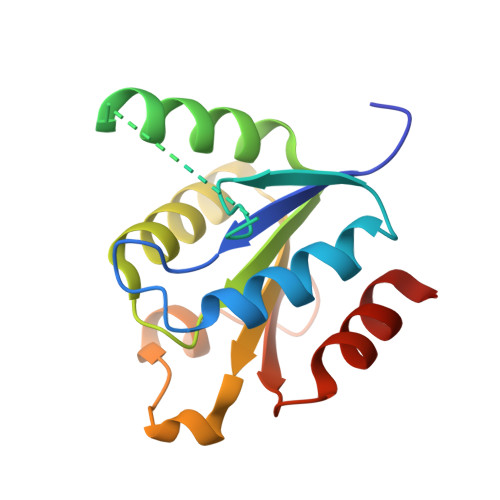Mechanism of substrate hydrolysis by the human nucleotide pool sanitiser DNPH1.
Rzechorzek, N.J., Kunzelmann, S., Purkiss, A.G., Silva Dos Santos, M., MacRae, J.I., Taylor, I.A., Fugger, K., West, S.C.(2023) Nat Commun 14: 6809-6809
- PubMed: 37884503
- DOI: https://doi.org/10.1038/s41467-023-42544-4
- Primary Citation of Related Structures:
8QHQ, 8QHR - PubMed Abstract:
Poly(ADP-ribose) polymerase (PARP) inhibitors are used in the clinic to treat BRCA-deficient breast, ovarian and prostate cancers. As their efficacy is potentiated by loss of the nucleotide salvage factor DNPH1 there is considerable interest in the development of highly specific small molecule DNPH1 inhibitors. Here, we present X-ray crystal structures of dimeric DNPH1 bound to its substrate hydroxymethyl deoxyuridine monophosphate (hmdUMP). Direct interaction with the hydroxymethyl group is important for substrate positioning, while conserved residues surrounding the base facilitate target discrimination. Glycosidic bond cleavage is driven by a conserved catalytic triad and proceeds via a two-step mechanism involving formation and subsequent disruption of a covalent glycosyl-enzyme intermediate. Mutation of a previously uncharacterised yet conserved glutamate traps the intermediate in the active site, demonstrating its role in the hydrolytic step. These observations define the enzyme's catalytic site and mechanism of hydrolysis, and provide important insights for inhibitor discovery.
Organizational Affiliation:
DNA Recombination and Repair Laboratory, The Francis Crick Institute, 1 Midland Road, London, NW1 1AT, UK.





















